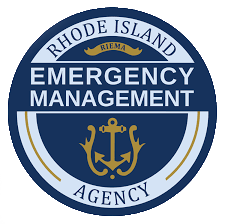Heat Waves & Extreme Heat
In Rhode Island, when the outside temperature goes above 90 degrees for three or more days, it is classified as a heat wave. If the hot temperatures last for several weeks, it is called extreme heat.
Heat waves and extreme heat can cause dust storms or droughts. For individuals, heat waves and extreme heat can cause sunburn or heat-related illnesses. Older adults, young children, and anyone who has a chronic health condition are more susceptible to heat-related illnesses.
Heat illnesses have the potential to be life-threatening. That is why it is important to make sure you and your family are prepared to beat the heat. Download the Extreme Heat Safety Guide to learn how you can prepare for a heat wave and extreme heat. The Extreme Heat Safety Guide also contains information about heat illnesses and how to treat them.
Extreme Heat and Power Outages
Heat waves also have the potential to cause blackouts in heavily-populated areas, due to the heavy use of air cooling devices. In some instances brownouts will occur either intentionally or unintentionally which results in electricity reduction. Brownouts are a drop in voltage in a power supply system that may be caused by a disruption of an electrical grid, or it may be imposed in order to prevent a blackout. To learn more about power outages and to prepare for them, click here.
